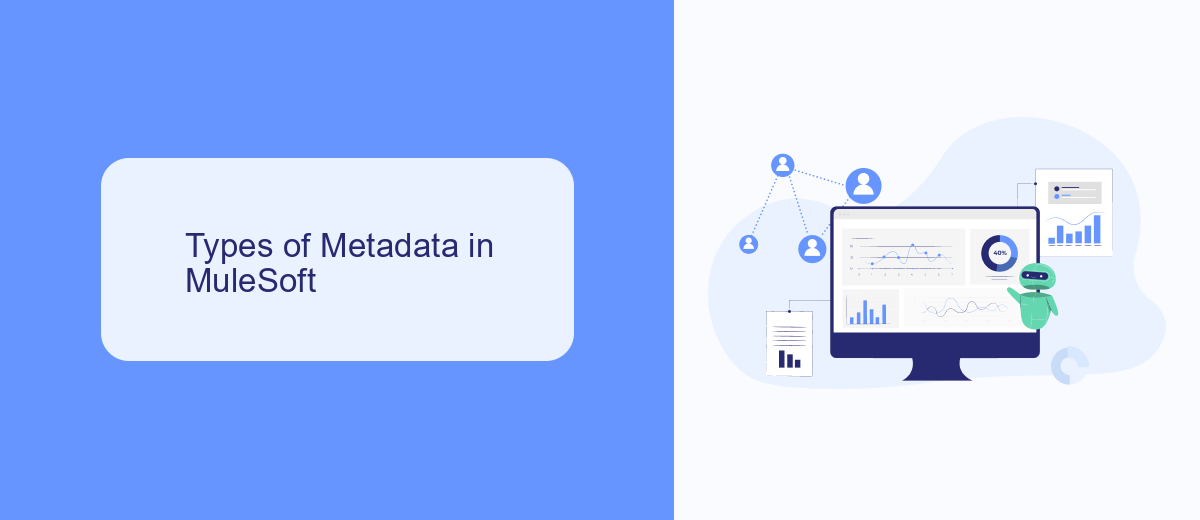Metadata in MuleSoft refers to the essential data that describes other data within the MuleSoft ecosystem. It provides critical information about data structures, types, and relationships, enabling seamless integration and efficient data management. Understanding metadata is crucial for developers and architects to streamline processes, ensure data consistency, and enhance the overall performance of MuleSoft applications.
Introduction to Metadata
Metadata in MuleSoft refers to the data that provides information about other data, enabling efficient data management and integration processes. It helps in defining the structure, operations, and constraints of data within various applications and systems. By using metadata, developers can streamline the integration process, ensuring that data flows seamlessly between different endpoints.
- Defines data structure and format
- Facilitates data mapping and transformation
- Improves data governance and security
- Enables efficient API management
In the context of MuleSoft, metadata plays a crucial role in simplifying the integration of various services and applications. For instance, tools like SaveMyLeads can be integrated using MuleSoft to automate the process of capturing and managing leads. By leveraging metadata, developers can ensure that the data is accurately mapped and transferred, reducing errors and improving overall efficiency. This ultimately enhances the ability to create robust and scalable integration solutions.
Types of Metadata in MuleSoft

In MuleSoft, metadata plays a crucial role in defining and managing the data structure, behavior, and configuration of various components within an integration. There are several types of metadata in MuleSoft, including DataWeave metadata, which defines the data transformation logic, and API metadata, which outlines the structure and behavior of APIs. Additionally, MuleSoft uses connector metadata to manage the configuration and interactions with external systems, ensuring seamless integration and data flow.
Another essential type of metadata in MuleSoft is flow metadata, which describes the configuration and orchestration of various integration flows and processes. This includes information about message processors, routers, and error handling mechanisms. Tools like SaveMyLeads can further enhance the integration process by automating data synchronization and providing real-time updates, ensuring that metadata is always up-to-date and accurately reflects the current state of the integration. By leveraging these different types of metadata, MuleSoft enables organizations to build robust, scalable, and maintainable integration solutions.
Benefits of Using Metadata in MuleSoft

Metadata in MuleSoft offers numerous advantages that streamline integration processes and improve data management. By utilizing metadata, developers can gain better insights into their data structures and relationships, enhancing the overall efficiency of their projects.
- Improved Data Consistency: Metadata ensures that data remains consistent across different systems and applications, reducing the risk of errors and discrepancies.
- Enhanced Data Governance: With metadata, organizations can better manage and govern their data assets, ensuring compliance with regulatory requirements and internal policies.
- Streamlined Integration: Metadata simplifies the integration process by providing detailed information about data sources and structures, making it easier to map and transform data.
- Better Documentation: Metadata serves as a valuable documentation tool, providing clear and comprehensive descriptions of data elements and their relationships.
- Efficient Troubleshooting: Metadata can help identify and resolve issues more quickly by offering insights into data flows and transformations.
Services like SaveMyLeads can further enhance the benefits of metadata in MuleSoft by automating the integration of various applications and data sources. This not only saves time but also reduces the complexity of managing multiple data flows, allowing businesses to focus on their core activities.
Best Practices for Managing Metadata in MuleSoft

Effective management of metadata in MuleSoft is crucial for ensuring data consistency and improving integration efficiency. Proper metadata management helps in tracking, maintaining, and utilizing data across various applications and systems.
To achieve optimal results, it is essential to follow best practices that enhance the handling and governance of metadata. These practices not only streamline integration processes but also ensure data integrity and security.
- Regularly update and validate metadata to ensure accuracy and relevance.
- Utilize centralized metadata repositories for easy access and management.
- Implement robust version control mechanisms to track changes and updates.
- Leverage tools like SaveMyLeads to automate data integration and synchronization across platforms.
- Ensure proper documentation and training for team members handling metadata.
By adhering to these best practices, organizations can significantly enhance their metadata management in MuleSoft, leading to more efficient and reliable integration processes. Tools like SaveMyLeads can further simplify the automation and synchronization of data, ensuring seamless operations across various platforms.
Conclusion
In conclusion, metadata plays a crucial role in MuleSoft by providing essential information about data, enabling better data management, and streamlining integration processes. By leveraging metadata, developers can enhance the efficiency and reliability of their applications, ensuring that they meet business requirements effectively. Metadata helps in maintaining consistency, improving data quality, and facilitating seamless communication between different systems.
Moreover, tools like SaveMyLeads can further simplify the integration process by automating data transfers and ensuring that metadata is accurately captured and utilized. This not only saves time but also reduces the risk of errors, making it easier for businesses to manage their integrations efficiently. As organizations continue to adopt MuleSoft for their integration needs, understanding and utilizing metadata will remain a key factor in achieving successful and scalable integrations.
FAQ
What is metadata in MuleSoft?
Why is metadata important in MuleSoft?
How can I view metadata in MuleSoft?
Can metadata be automatically generated in MuleSoft?
How does metadata improve the integration process in MuleSoft?
What do you do with the data you get from Facebook lead forms? Do you send them to the manager, add them to mailing services, transfer them to the CRM system, use them to implement feedback? Automate all of these processes with the SaveMyLeads online connector. Create integrations so that new Facebook leads are automatically transferred to instant messengers, mailing services, task managers and other tools. Save yourself and your company's employees from routine work.
